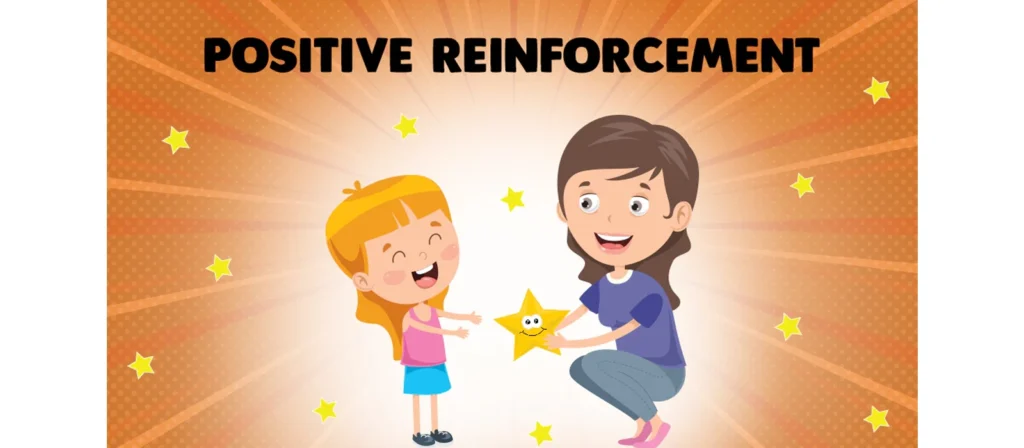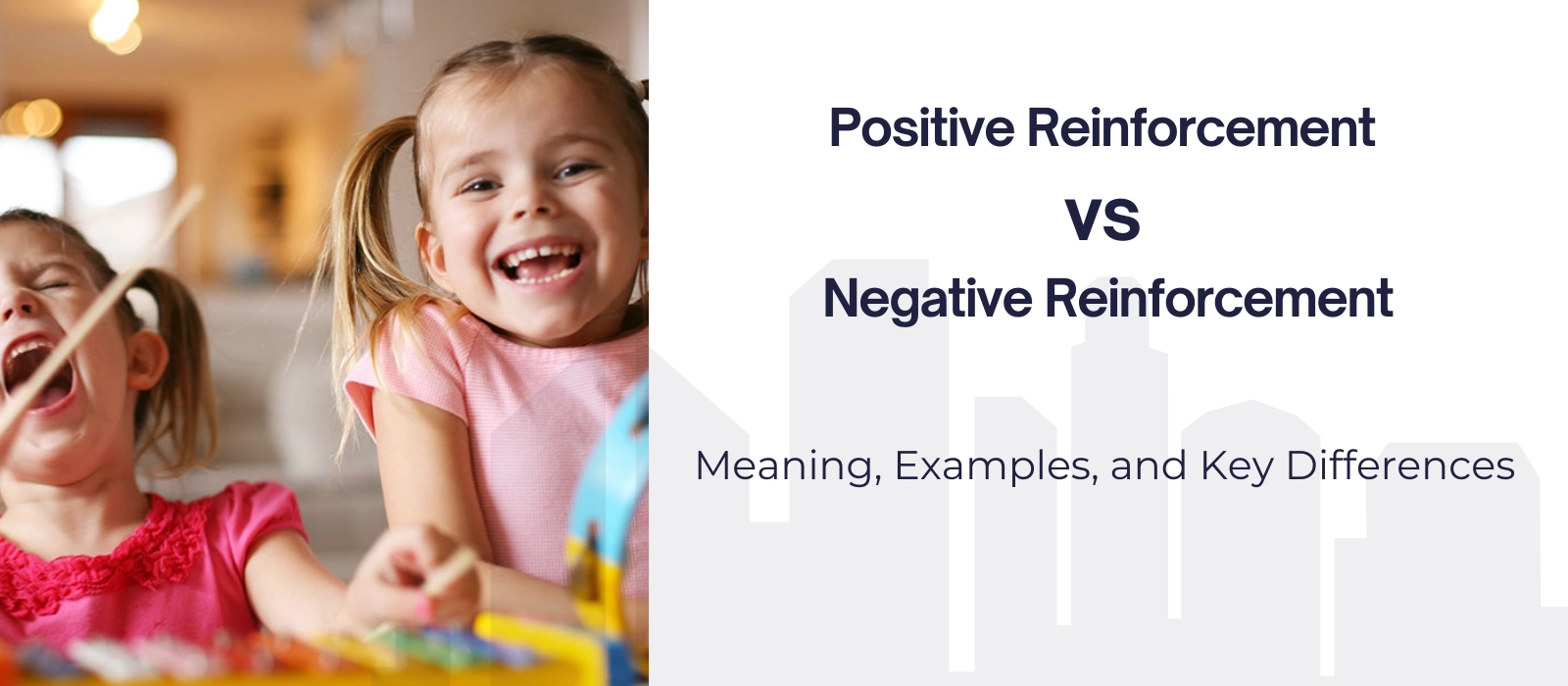In a preschool classroom, a teacher notices one child eagerly tidying up the toys after playtime. The teacher smiles, praises the child, and hands over a colorful sticker. Soon, other children begin to do the same, not because they dislike cleaning, but because they want to earn praise and a sticker too. This is an example of positive reinforcement in action—rewarding a desired behavior to encourage it to happen again.
On another day, a student quickly finishes homework in order to avoid the teacher’s reminder that usually follows late submissions. The motivation here is different: the child is trying to remove or prevent an unpleasant situation. This is what we call negative reinforcement—strengthening a behavior by removing something aversive.
These two simple classroom scenarios reveal how powerful reinforcement strategies are in shaping human behavior. From early childhood education to workplace training, reinforcement principles guide how people learn, adapt, and maintain behaviors. But despite their frequent use, many educators and parents still confuse positive reinforcement with negative reinforcement. The distinction is important, because each has unique applications, strengths, and limitations.
In this article, I will explain what positive reinforcement is, what negative reinforcement means, and how they differ. I will also share examples from psychology, classrooms, and everyday life so you can understand how to apply these strategies effectively. By the end, you will see why reinforcement lies at the heart of education and behavior management.

What is Positive Reinforcement?
Definition of Positive Reinforcement
Positive reinforcement is a concept in behavioral psychology that refers to adding a rewarding stimulus after a desired behavior occurs, making it more likely that the behavior will be repeated. It is central to operant conditioning theories developed by B.F. Skinner, who demonstrated how rewards can shape learning and long-term habits.
Positive Reinforcement in Psychology
In psychology, positive reinforcement is not just about rewards—it is about strengthening behaviors. When an action consistently leads to pleasant outcomes, the brain forms associations that encourage repetition. This principle is used widely in therapy, education, and even workplace management.
Positive Reinforcers Explained
A positive reinforcer can be anything the individual finds motivating or rewarding. For children, this might be praise, stickers, or extra playtime. For adults, it could be recognition, bonuses, or words of encouragement. The key is that the reinforcer must be meaningful to the person receiving it.
Importance in Education and ABA
In Applied Behavior Analysis (ABA), positive reinforcement is considered one of the most effective strategies to teach new skills and reduce challenging behaviors. Teachers, therapists, and caregivers rely on reinforcement to encourage communication, social interaction, and independence in children, including those with developmental delays.

What is Negative Reinforcement?
Definition of Negative Reinforcement
Negative reinforcement occurs when a behavior is strengthened because it helps remove or prevent an unpleasant stimulus. It is often misunderstood as punishment, but the two are different. Negative reinforcement encourages behavior, while punishment seeks to reduce it.
Negative Reinforcement in Psychology
In psychology, negative reinforcement plays a crucial role in learning and motivation. For example, a student may study harder to avoid failing a test, or an employee may complete a task quickly to prevent a manager’s criticism. The behavior continues because it removes the possibility of an aversive outcome.
Negative Reinforcement vs Punishment
It is important not to confuse negative reinforcement with punishment. Punishment decreases a behavior, while negative reinforcement increases it by removing discomfort. For instance, taking painkillers to get rid of a headache is negative reinforcement, not punishment, because it encourages you to use the medicine again in the future.
Role in Education and Behavior Management
Teachers and parents sometimes use negative reinforcement unintentionally. For example, when a teacher stops scolding after a student sits quietly, the student’s behavior of sitting still is reinforced. Understanding this distinction helps educators apply reinforcement strategies more effectively without relying too heavily on avoidance-based learning.
Examples of Positive Reinforcement
Classroom Examples
Teachers often praise students for completing assignments, give stickers for good behavior, or allow extra recess time as a reward for teamwork.
👉 For example, when a student answers a question correctly, the teacher might say “Excellent work, you really understood the concept,” while handing out a star sticker. Over time, more students raise their hands because they want similar recognition.
Everyday Life Examples
Parents might reward children with extra playtime for finishing chores.
👉 For instance, a child who clears the dinner table without reminders may be allowed to choose the evening family activity.
At work, a manager could recognize an employee’s dedication in a team meeting, or give a small gift card as a thank-you for consistent punctuality. These concrete rewards make the reinforced behaviors more likely to occur again.
Psychology and Therapy Examples
In psychology and ABA therapy, therapists use positive reinforcement to encourage children with developmental challenges.
👉 For example, a therapist might clap and say “Great job asking for help!” when a child uses words instead of gestures.
👉 Another case is using a token system where children earn tokens for completing tasks, which they can later exchange for a favorite toy or activity.
Workplace and Adult Learning Examples
Positive reinforcement also motivates adults.
👉 For instance, a sales team member reaching a monthly target may receive a financial bonus or a “Top Performer” award.
👉 In learning environments, mentors who celebrate progress—like applauding a student who delivers a strong presentation—foster continuous growth and confidence.
Examples of Negative Reinforcement
Classroom Examples
In schools, negative reinforcement often happens without teachers realizing it.
👉 For instance, when a teacher stops scolding after a student sits quietly, the student learns that silence removes the unpleasant experience.
👉 Another example: a student completes homework early to avoid the teacher’s reminders. The removal of nagging reinforces the habit of finishing work on time.
Everyday Life Examples
Negative reinforcement is common in daily routines.
👉 A driver fastens the seatbelt to stop the annoying beeping sound.
👉 A teenager cleans their room quickly to prevent their parents from complaining. In both cases, the behavior is strengthened because it removes discomfort.
Psychology and Therapy Examples
Therapists may also rely on negative reinforcement in behavior management.
👉 For example, a child who shows anxiety may learn coping techniques to avoid stressful triggers. The relief from anxiety encourages the use of those techniques again.
👉 Similarly, in clinical settings, patients may follow medical routines diligently to prevent unpleasant health symptoms.
Workplace and Adult Learning Examples
In the workplace, employees often act to avoid negative outcomes.
👉 An employee may submit reports on time to prevent repeated reminders from a supervisor.
👉 A team may work overtime to avoid project delays and the stress of last-minute pressure. These behaviors are not motivated by rewards, but by removing aversive conditions.

Positive Reinforcement vs Negative Reinforcement
Key Differences in Meaning
Positive reinforcement adds something pleasant to encourage behavior, while negative reinforcement removes something unpleasant.
👉 Example: A teacher gives praise (positive reinforcement) versus a teacher stops scolding when a student sits down (negative reinforcement).
Both increase desired behavior, but the mechanism is different—one by reward, the other by relief.
Positive Reinforcement vs Punishment
It is common to confuse negative reinforcement with punishment. Punishment aims to decrease behavior, while both positive and negative reinforcement aim to increase behavior.
👉 Example: Taking away recess because a child misbehaves is punishment. Giving recess as a reward for good behavior is positive reinforcement. Removing nagging after the child follows rules is negative reinforcement.
Educational Applications
In classrooms, teachers often use a mix of both reinforcement strategies.
👉 Positive reinforcement: rewarding group work with extra recess.
👉 Negative reinforcement: reducing homework load when students show consistent effort.
Both approaches can build discipline, but positive reinforcement tends to create more motivation and enthusiasm, while negative reinforcement risks focusing too much on avoidance.
Workplace and Daily Life Comparisons
Reinforcement strategies are not limited to children.
👉 Positive reinforcement in the workplace: giving a bonus for meeting sales targets.
👉 Negative reinforcement: stopping constant reminders once reports are submitted.
Both strengthen behavior, but the emotional outcomes differ. Positive reinforcement usually promotes satisfaction and long-term engagement, while negative reinforcement often results in compliance driven by pressure.
Positive Reinforcement vs Negative Reinforcement: Comparison Table
| Aspect | Positive Reinforcement | Negative Reinforcement |
|---|---|---|
| Definition | Adding a pleasant stimulus to increase behavior | Removing an unpleasant stimulus to increase behavior |
| Goal | Encourage behavior by reward | Encourage behavior by relief |
| Example in Classroom | Giving a sticker for completing homework | Stopping reminders once homework is done |
| Example in Daily Life | Parent praises child for sharing toys | Child cleans room to stop parental nagging |
| Workplace Example | Employee gets a bonus for reaching a target | Supervisor stops sending reminder emails once task is finished |
| Emotional Impact | Creates motivation, satisfaction, positive associations | Creates relief, sometimes avoidance or compliance |
| Common Confusion | Mistaken for bribery | Mistaken for punishment |
| Best Use Case | Building enthusiasm, long-term engagement | Eliminating unwanted distractions, encouraging responsibility |
Conclusion
Positive reinforcement and negative reinforcement are not abstract theories—they are everyday strategies that shape how children learn, how employees work, and how communities grow. Positive reinforcement focuses on adding rewards to strengthen behavior, creating a culture of encouragement and motivation. Negative reinforcement, on the other hand, works by removing discomfort, often leading to short-term compliance but not always fostering long-term enthusiasm.
For educators and parents, the lesson is clear: reinforcement strategies must be applied with intention. In classrooms, consistent positive reinforcement—such as praise, stickers, or extra playtime—can cultivate a supportive learning environment where children feel confident and motivated. Negative reinforcement may help reduce disruptive behaviors, but should be balanced carefully to avoid an overreliance on avoidance-based learning.
At XIHA Furniture, we understand that building positive learning environments goes beyond just teaching methods—it extends to the very spaces where children learn and grow. By supplying safe, affordable, and high-quality preschool furniture, we help kindergartens and educational institutions create classrooms where positive reinforcement can thrive. Comfortable, child-friendly furniture makes it easier for teachers to reward engagement, organize activities, and design learning areas that promote both discipline and joy.
As educators and leaders continue to explore reinforcement strategies, the choice is not about using one approach exclusively, but about blending both where appropriate. Yet, it is positive reinforcement—encouraging effort, recognizing progress, and celebrating success—that leaves a lasting impact. And at XIHA Furniture, we are proud to contribute to that journey by helping schools build environments where every child’s achievements are noticed, reinforced, and celebrated.



